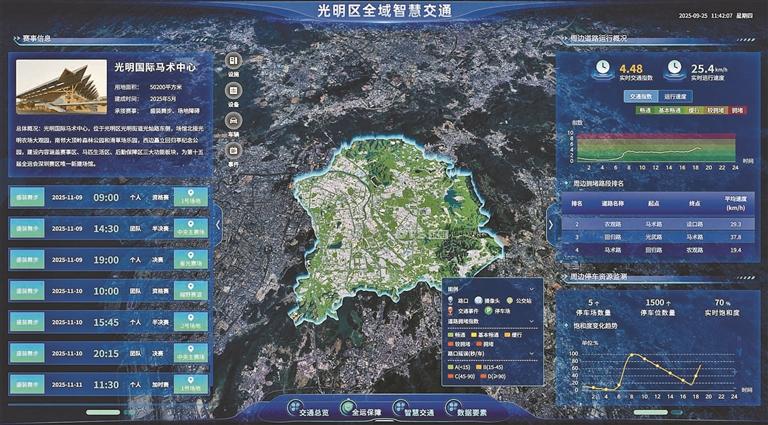
A smart traffic map in Guangming.
As the 15th National Games approach, Guangming District's Smart Traffic Phase I Project is entering its final sprint, with key milestones now achieved.
According to the Guangming District Government Service and Data Management Bureau, the project has completed major components, delivering tangible progress in smart signal control, intelligent law enforcement, and event traffic management.
Launched in late July, the district-level demonstration project has overcome complex challenges such as multi-department coordination and underground infrastructure work. The project team, together with Shenzhen Urban Transport Planning & Design Institute Co., Ltd. and China Communications Investment Co., Ltd., has achieved breakthroughs at 38 key intersections around five major sports venues of the Games.
In traffic control, the team is accelerating the development of an “autonomous dynamic control” intelligent signal system, which will soon integrate with enhanced sensing facilities. Once completed, the system will deliver regional-level optimization and “priority passage” for key vehicles, significantly improving road efficiency.
To ensure smooth transportation during the Games, the project has established a visualized, manageable, and service-oriented traffic command framework. Dedicated monitoring dashboards for five key venues in Guangming are now fully operational.
The system proved its effectiveness during a test event on Sept. 10. Fifty vehicle-mounted terminals are also being installed, enabling real-time communication between vehicles and the cloud platform. The system will provide lane-level navigation and keep critical updates such as traffic events and competition schedules, ensuring seamless mobility for Games-related vehicles.
Beyond the Games, the project aims to improve everyday travel for residents and spectators alike. With optimized traffic signal control and enhanced sensing at 25 key intersections, rush-hour congestion has been notably reduced.
At the core of the initiative is the Smart Traffic Data Platform, which is integrating 11 major categories of data — including signal control, parking, and public transport — across the district. Core functions such as traffic overview, road monitoring, and parking management have already gone live.
The platform enables real-time visualization of vehicle flow, parking availability, bus locations, and pedestrian density on a single map.




